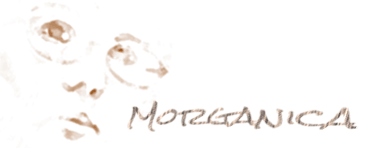You can generally say three things about the first half-day of Bullseye’s BeCON glass conference; It’s the world’s longest half-day (about 16 hours this time), it involves a lot of hugging, and the best part happens after 7pm.
Thank heavens they didn’t decide to make this a FULL day.
So let’s start with the best part: The Bullseye Gallery reception. The art was a grab-bag of technique, voice, old, new, famous, startling, predictable, unknown…and worked on just about every level.
I saw four pieces that absolutely belong in my home (well, five, but the fifth is so far out of reach it doesn’t count). I saw work that intrigued me (how the HECK did they do that?), work that bugged me and work that made me stand up and think about my own art.
I’d say that makes the show a success. If you go, pause to ooh and ahhh over the Marioni (well, of course), head back and look at Nathan’s juxtaposition of concrete and glass, but at some point head upstairs where the real action is.
You go to these things to meet up with old (and new) friends, though, and I sure did: Emily Brock said hello (this is the THIRD time…eeek!), and I got to chat with James Kervin. I saw folk like Tony Smith who I’d never met before (in person, anyway–virtually is a whole different story), and the place was full of familiar faces.
I had a ball.
We started the day, though, by grabbing breakfast on the road and heading for a special lecture on investments from Ralph Carter, of Ransom & Randolph. Since this is liable to be the only real casting discussion in the entire thing, I sure as heck wasn’t going to miss it.
Carter put some science behind the voodoo of investing molds for glass, and offered up some VERY intriguing experiments with casting from the jewelry world. I used to use a centrifugal caster in my jewelry work, long ago; Carter says that with some work it can do a very nice job of casting small, delicate objects.
Hmmmm…
After lunch, Bruce Guenther, chief curator at the Portland Art Museum, gave one of two keynotes, which were interesting juxtapositions for the “glass as art” topic. Unlike the last BeCon, where the keynote speaker suggested that glass and art were mutually exclusive, Guenther tied the work of Klaus Moje to Bauhaus, turned a striped vase into an expression of space and form, and positioned Jun Kaneko’s architectural panels into next-generation Albers.
It was an intelligent, encouraging comparison, at least where holes surrounded by glass or contrasting opaque and transparent stripes in a fused glass panel become a lot more important than you’d think. (Hmmmm…maybe I should go check my scrap bin for artistically transformative works.)
I’m not poking fun, rather expressing a bit of surprise–generally the aaaaahrt world is dismissive of any glass that doesn’t hold a beverage. Shape a pile of human excrement and it’s probably a cosmically significant work of art. Make it in glass and it’s merely pretty, certainly nothing to write home about.
Hearing someone who knows his onions suggest the opposite is…intriguing.
Have we turned a corner? (And if we have, is Guenther planning to change the name of the room housing the Africano glass sculpture to something that doesn’t include the term “decorative?”)
Guenther gave way to artist Judith Schaecter, who rollicks on stage like a rock band on speed and is almost the polar opposite of her work when she’s behind the podium (well, I thought that, if no one else did). She took a slightly different take on what Guenther discussed: “Let’s start with the obnoxious assumption that art is a higher pursuit than glass.”
O goodie: Another discussion on art vs. craft. Except that this is an artist working in one of the older, more staid forms of glass working, i.e., stained glass, and she’s turning it inside out. She’s also looking at it with a sense of humor, although that may stem from a deep-seated need to refrain from killing a curator.
She and I share similar views of art made of poop vs art made of glass…I immediately liked this lady
Schaecter discussed the evolution of artists, artisans and craftsmen, and suggested that artists need to get over themselves and take a few lessons in making..and everybody else needs to chillax.
While she talked, it struck me: In the olden days, you hired a painter or a sculptor to record a moment or a person. Now we’ve got cameras and 3D printers and televisionsand videos and the web, offering exact reproductions with the press of a key.
So maybe the picture business was falling off, nobody needed busts anymore…and all those artisans simply did the “who moved my cheese?” profession-switching thing and became artists? And then aaaaaahrtists?
Wonder what you’d get if you plotted the growth in image reproduction technology against the loss of employment in traditional artforms…and the rise of abstract expressionism, surrealism, etc.? Would you demonstrate that better technology leads to more abstract artists?
Hmmmm. Technology has either freed artisans to pursue higher artforms…or forced them into scamming the public? There’s about a year’s worth of mulling in that one.
In the end, though, all this speculation is mostly artists, talking to themselves. Did it actually change anything? Prolly not. But it was fun.
Happy sigh (and yawn). That’s it for day 1: I’m going to bed. G’night.


Comments welcome! (thanks)